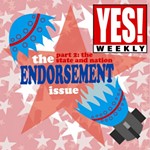Crossing the river
The Mississippi River, the largest on our continent and the fourth longest in the world, makes a spectacular bend around the city of New Orleans, effectively turning the city into a peninsula and giving geographical basis to the nickname Crescent City.
As it moves past the Uptown levee near the Audubon Zoo, wends across Center City and the Garden District and the downtown neighborhoods of the Warehouse District and the Central Business District, the Mississippi actually begins to flow north as it hits the French Quarter before making a sharp easterly right turn around Algiers Point, technically on the Westbank though it is indeed due east of the city.
Algiers, again technically, is part of New Orleans proper — Orleans Parish, evidenced by the architecture congruent with that on the other side. And the new housing project, too, correlates neatly with the revamped structures that arose in the years following Katrina after they tore down the Magnolia and St. Thomas projects: neat little shotgun homes in bright colors, with lush, green lawns and sturdy porches. They are the nicest public homes I’ve ever seen, a far cry from the ghettoes that once stood on these lots.
We’re staying out here on the Westbank this time around — or the “Best Bank,” as locals call it —at the home of our old friends Atom and Nat’ly, who Greensboroans may remember from their time here as refugees after Hurricane Katrina wrought its painful lesson on the people of New Orleans and the surrounding areas.
They’ve since married, bought a home in the Westbank community of Terrytown and are now expecting their first child — a boy, they learned just a day after we came to stay for a few days.
This is a different kind of trip for my wife and me to the city where we met and fell in love. We’ve brought our own children, for one, which changes the dynamics considerably. Our oldest was born here, in Touro Hospital, and he is eager to understand why this is a special thing. The other two, who surely would not have existed but for the time their parents spent traipsing the streets of this city, want to know more about the place that we hold so dear. Also, they want to go to the zoo.
From our base of operations on the Westbank, we can approach New Orleans from the Crescent City Connection Bridge, an iconic twin span that crosses the river and lands roughly at the dividing line between Uptown and Downtown, or we could drive further upriver and take the Huey P. Long Bridge, built in the months following the Kingfish’s assassination, allegedly perpetrated, ironically, by the grandfather of a kid I went to high school with on Long Island. The Huey P., the first bridge in the state to cross the Mississippi, has always scared the crap out of me: train tracks run along the center of the span and the rusted girders and patchy asphalt make me think the thing is going to come down any day now.
We can also take the ferry from Algiers Point, far more thrilling for these kids growing up in a landlocked county more than 200 miles from the coast. While the ferry, free for passengers and $1 for cars coming into the city, acts as a functional means of transportation for thousands of locals, it’s also a tourist attraction of sorts — a free ride on one of the world’s largest working waterways, the vessel darting between loaded-down barges, paddlewheel riverboats and cruise ships headed for the mouth of the river.
“For some of these tourists it’s like seeing the Amazon,” Atom says.
So we take the ferry across before we visit the aquarium, nestled near the terminal at the Riverwalk. We take it across again the next day, before riding a streetcar Uptown, walking across Audubon Park and hitting the zoo. And we took it across on our last day in town, before hitting the insectarium, where hundreds of butterflies flutter in a Japanese Garden, and then hiking through the French Quarter, where I introduced my children to the cautionary tale that is Bourbon Street.
The last ferry ride I take alone, after an evening spent at Igor’s, the 24-hour bar, Laundromat and grill where I worked for half a decade. The occasion is the annual Christmas in July party, begun almost 15 years ago, when I was still mixing drinks behind the bar. There I see a coterie of long-lost faces: Kerryn, the Mad Aussie, who left the bar business to work as an emergency-room nurse, where the skills she learned a Igor’s come in pretty handy. Likewise for her husband, Jerry, who preceded me on the graveyard shift at Igor’s and has been driving a cab for nigh on 20 years now.
After we tell our stories and acknowledge the years gone by, I hitch a ride downtown and board the ferry at the foot of Canal Street for one last boat ride.
I take my seat at the stern, among French Quarter workers coming off shifts and inebriated party folks calling it a night. The blast horn sounds before the ferry pushes off, and I can see the muddy water churning as the lights of the city recede.
I pull out my phone to snap a picture, but I really don’t need to. It’s a view I will never forget.

